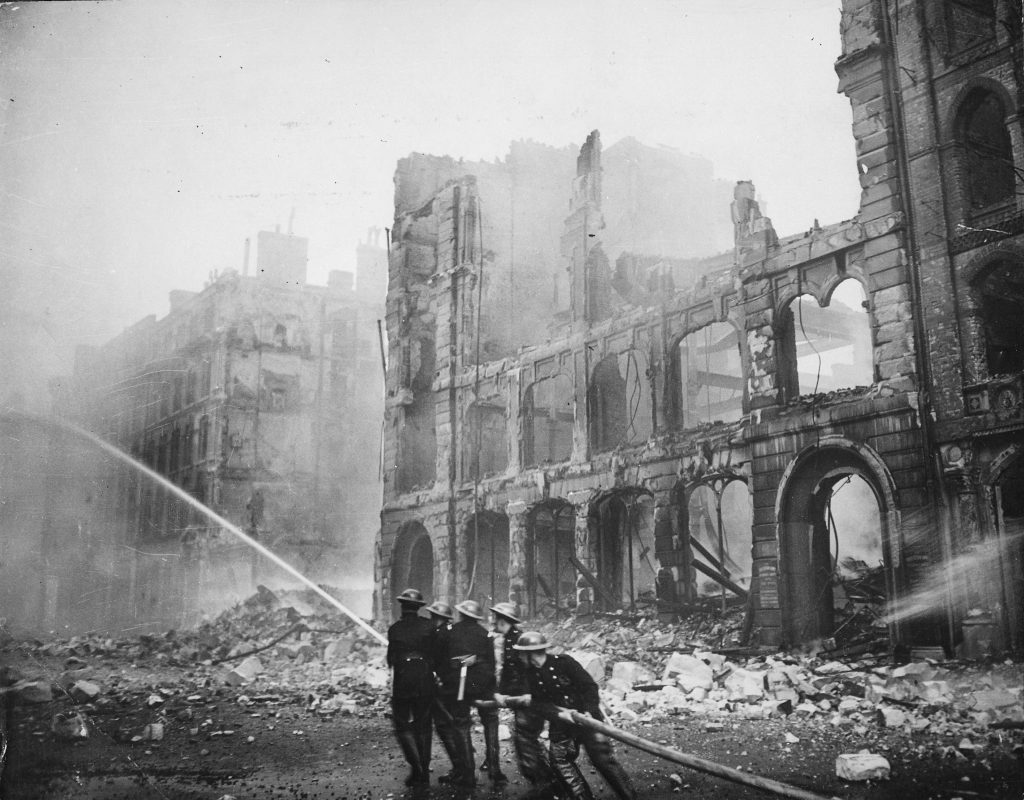Posts Tagged ‘Fire Service’
Operation Colour Scheme. The Fire Service’s Top Secret D-Day Mission.
2024 marks the 80th anniversary of D-Day. On 6th June 1944, the Allied Forces launched one of its biggest military operations – they came by land, sea and air and would eventually bring about the liberation of Europe and the end of World War II.
But as D-Day was being planned, more and more equipment was stockpiled in the South of England and needed to be protected, and that’s why the National Fire Service Commanders were tasked with a top secret mission of their own – Operation Colour Scheme.

Operation Colour Scheme: Protecting the Overlord Invasion’s Infrastructure
Operation Colour Scheme, a little-known but vital aspect of the Fire Service’s activity in World War II, involved moving 11,000 firemen and women and over 1,200 fire fighting vehicles to the South of England to protect resources being stored in rural areas.
In 1943, the German bombing offensive was at a lower level and so it was decided that fire fighting resources could be moved from areas in the North and the Midlands to areas in the South to cover sites that now required a higher level of protection, including:
- Logistical supply sites
- Harbours linked to the D-Day invasion – most notably coastal areas of East Sussex and an armada of ships in the lower reaches of the Thames
- Ammunition dumps
- Petrol pipe lines
The Colour Scheme – and what each colour meant
And to aid planning, England and Wales were split into 12 regions – with each region given a colour to represent the level of risk each region faced:

War Relics Forum
- Regions shaded Purple and Blue needed to be reinforced to above their maximum strength – the Purple regions were most impacted
- Regions shaded Green needed to be reinforced up to their maximum strength
- Regions shaded Brown were areas from which resources could be drawn from to provide for Purple, Blue and Green regions
The crucial role of the Fire Service during World War II
The war years proved to be the busiest for our Fire Brigades with fire fighters on the front line protecting communities during Air Raids and as part of Operation Colour Scheme.
Fire fighters were issued with one basic uniform; a steel helmet, rubber boots, trousers and waterproof leggings – although shortages saw some stuck with just Post Office uniforms!
The first air raid on London took place on 7th September 1940 and this would mark the start of The Blitz – where London endured bombings for 57 nights in a row. Most of the air raids took place at night, meaning fire fighters spent long hours extinguishing fire or dealing with explosions.

New York Times Paris Bureau Collection, Public domain, via Wikimedia Commons
In the first 22 nights of air raids, fire fighters had fought nearly 10,000 fires – and for many, this was their first experience of fire fighting…
And by 1943, over 70,000 women had enrolled in the National Fire Service, many becoming fire watches and drivers and managing the communications network.
Britain’s Prime Minister, Sir Winston Churchill honoured these great efforts and once said that the fire service “were a grand lot and their work must never be forgotten”.
The BRAND NEW History of the Fire Brigade 50p Collection
Issued to mark 200 years since the establishment of Britain’s first Municipal Fire Service, The History of the Fire Brigade 50p Collection shares the story of two centuries of heroic service.
Included in the set is the 1934 London Fire Brigade 50p Coin which depicts a World War II Fire Engine – a Dennis Chassis with an extendable ladder – in front of a background representing the city during The Blitz.

Each coin has been officially authorised by Buckingham Palace and King Charles III to pay tribute to the unsung heroes who have battled flames and saved lives for centuries.
A variety of specifications are available to order today from The Westminster Collection. Click here to view the COMPLETE range >>
